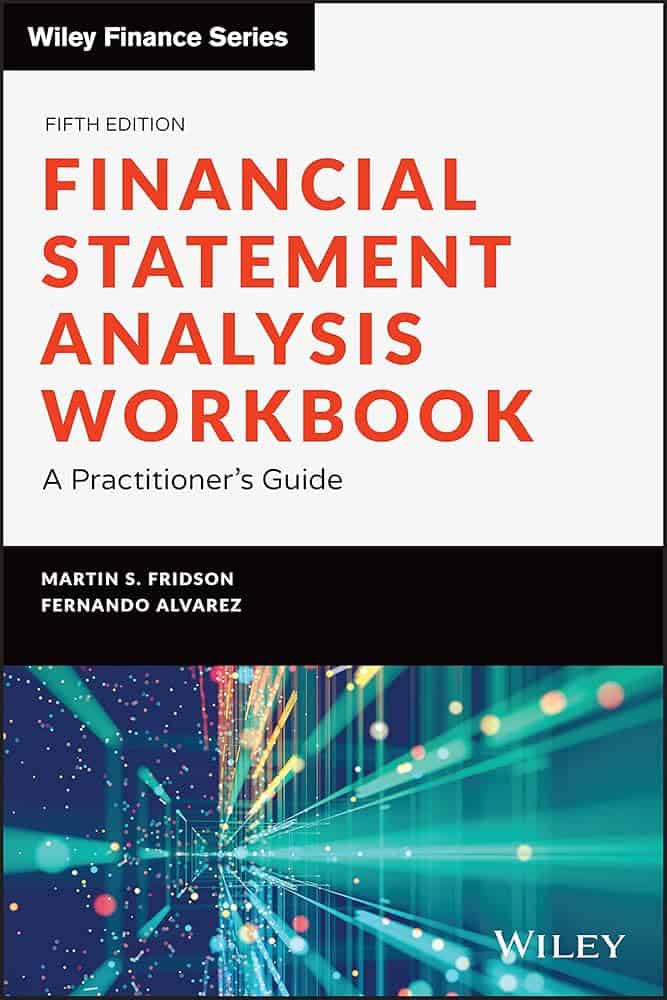Overview : Financial Statement Analysis
- Book Title: Financial Statement Analysis
- Author: Martin S. Fridson and Fernando Alvarez
- Publication Date: April 2022.
- price: $63.81
- Pages: 352
Overview of the Book
The author is an experienced Chartered Accountant and MBA graduate from IIM Indore, with a passion for demystifying complex financial concepts. With years of expertise in analyzing financial statements, the author empowers readers to make informed decisions.
Introduction
In the ever-evolving world of finance and investing, understanding financial statements is crucial for making informed decisions. "Financial Statement Analysis" by Martin Fridson and Fernando Alvarez emerges as a beacon of knowledge, guiding both novices and seasoned professionals through the intricate landscape of corporate financial reporting.
Book Summary
This comprehensive guide delves deep into the three pillars of financial statements: balance sheets, income statements, and cash flow statements. The authors meticulously break down complex concepts, making them accessible to readers of all backgrounds. From basic principles to advanced analysis techniques, the book covers a wide spectrum of topics essential for anyone looking to master the art of financial interpretation.
Key Themes Explored
- Decoding balance sheets and assessing financial position
- Analyzing income statements to evaluate profitability
- Understanding cash flow statements and their importance in business sustainability
- Advanced analysis techniques, including ratio analysis and trend identification
- Real-world applications through case studies and practical examples
Analysis of Themes
Balance Sheets: The Financial Snapshot
The book excels in its treatment of balance sheets, offering readers a clear lens through which to view a company's financial position. Fridson and Alvarez expertly guide readers through the components of assets, liabilities, and equity, emphasizing the importance of key ratios like the current ratio and debt-to-equity ratio. This section is particularly valuable for investors and analysts looking to assess a company's liquidity and financial stability.
Income Statements: Profitability Unveiled
In discussing income statements, the authors provide a thorough exploration of revenue recognition, expense management, and profitability metrics. They emphasize the significance of gross profit margin and operating income, offering insights that are crucial for evaluating a company's operational efficiency and earning power. This knowledge is indispensable for personal finance enthusiasts and professional investors alike.
Cash Flow Statements: The Lifeblood of Business
Perhaps the most illuminating section of the book is its treatment of cash flow statements. Fridson and Alvarez masterfully explain how cash moves through a business, breaking down cash flows from operating, investing, and financing activities. This analysis is vital for assessing a company's true financial health, going beyond the often misleading picture painted by accrual accounting.
"Cash is king. The cash flow statement is the most important financial statement for the day-to-day operations of a company." - Martin Fridson
Writing Style and Approach
The authors strike a perfect balance between academic rigor and practical application. Their writing is clear and concise, making complex financial concepts accessible to a wide audience. The inclusion of real-world case studies and examples from various industries brings the material to life, demonstrating how financial statement analysis applies to actual business scenarios.
Strengths and Weaknesses
Strengths:
- Comprehensive coverage of financial statement analysis
- Clear explanations of complex concepts
- Practical examples and case studies
- Balanced perspective on the limitations of financial statements
Weaknesses:
- Limited coverage of emerging topics like cryptocurrency accounting
- Some sections may be too technical for absolute beginners
Comparison to Other Works
While "Financial Statement Analysis" stands out for its depth and clarity, it's worth comparing it to other notable works in the field. The Interpretation of Financial Statements" by Benjamin Graham offers a more concise overview, ideal for beginners. In contrast, "Financial Shenanigans" by Howard Schilit focuses more on detecting accounting fraud, complementing Fridson and Alvarez's work for those interested in forensic accounting.
Relevance to Current Market Trends
In today's rapidly changing financial landscape, the principles outlined in this book remain highly relevant. As market trends shift and new investment vehicles like cryptocurrencies emerge, the fundamental skills of financial statement analysis become even more critical. The book provides a solid foundation for understanding traditional financial reporting, which can be applied to analyzing newer financial products and markets.
Conclusion
"Financial Statement Analysis" is an indispensable resource for anyone serious about mastering the intricacies of financial reporting. Whether you're a student of finance, a professional analyst, or an individual investor, this book offers invaluable insights that will enhance your ability to make informed financial decisions.
The authors' expertise shines through every page, providing readers with a comprehensive toolkit for navigating the complex world of corporate finance. While it may require some effort to digest, the knowledge gained from this book will pay dividends for years to come.
Final Verdict
For its depth, clarity, and practical applicability, "Financial Statement Analysis" earns a strong recommendation. It's an essential addition to any financial professional's library and a valuable resource for anyone looking to enhance their financial literacy.
Ready to elevate your financial analysis skills? Click here to purchase "Financial Statement Analysis" and start your journey towards financial mastery today! In conclusion, this article has provided an overview of the topic at hand.





